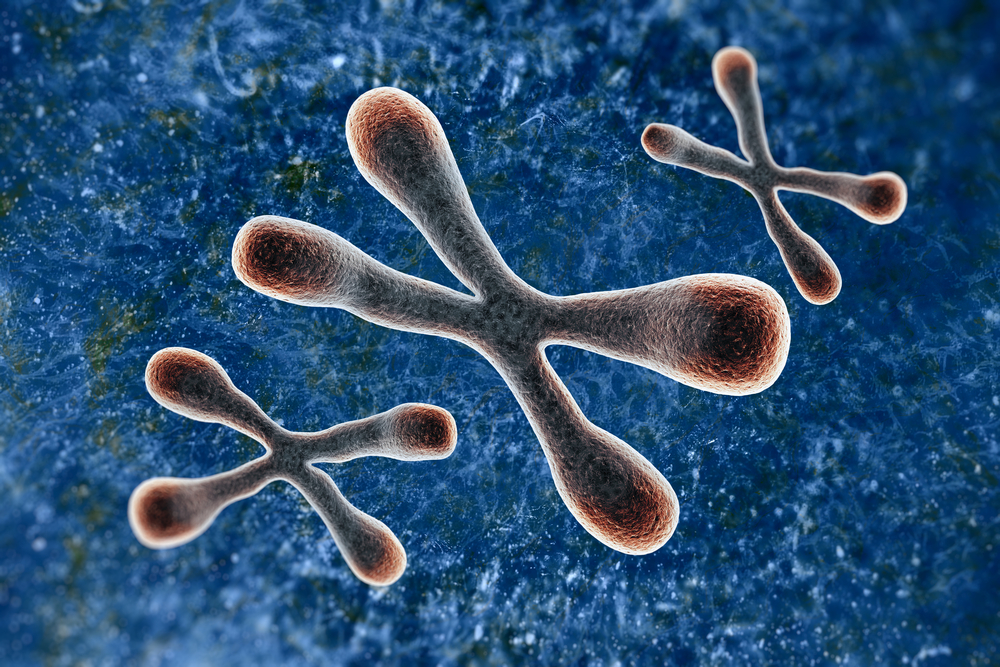Type of Chromatin Seen to Stop ‘Jumping Genes’ from Doing Harm, as in Hemophilia

New research suggests that the main developmental role of heterochromatin, a form of dense DNA found in chromosomes, is to suppress virus-like DNA elements known as “jumping genes” from replicating and attaching themselves across a person’s genome, potentially destroying important genes and causing a variety of diseases, including hemophilia and cancer.
The study, by University of North Carolina School of Medicine scientists, is titled “Direct interrogation of the role of H3K9 in metazoan heterochromatin function,” and published in Genes & Development. It details the function of this basic actor in cellular biology and aids scientific understanding of the various steps in heterochromatin formation.
Problems that disrupt these steps are linked with diseases, like many cancers. Understand the processes by which cells build heterochromatin may help scientists develop treatments that target troubled steps, preventing the “jumping genes” — also called transposons — from becoming active in cells.
“The repression of transposon mobilization is necessary to maintain genome stability, and we now think this repression may be the major developmental function of heterochromatin, rather than a role in controlling gene expression and cell proliferation,” Robert Duronio, PhD, a professor of biology and genetics and the study’s senior author, said in a news release. “This finding was very much unexpected.”
Chromatin is the packed structure of DNA in the cells. It comes in two broad forms: loose euchromatin, which controls gene expression and encodes proteins, and dense heterochromatin, thought to mainly suppress gene activity. The various roles attributed to heterochromatin, however, are difficult to confirm in experiments with higher animals, like mice, because its clusters are hard to precisely block.
“Mice, as well as humans, have three different clusters of histone genes on different chromosomes, and so creating genetic manipulations at those different spots is very difficult, especially because there are other essential genes within those histone gene clusters,” said Taylor Penke, a UNC graduate student and first author of the study.
According to one current scientific model, heterochromatin forms when the histone H3 protein is chemically modified. Researchers decided to test this model in Drosophila fruit flies.
“The histone H3 genes we wanted to change are clustered in one location in the genome of a fruit fly, without other essential genes in the cluster, so they can all be removed at once and replaced with mutant histone H3 genes,” said Penke.
Although under some circumstances hosts can benefit from the transposons, or “jumping genes,” in many cases they can be harmful. The researchers assume that the 98% mortality rate found in the Drosophila mutants was due to the effects of transposons inserting themselves into key genes.
“It seems that the major role for the methylation of histone H3 that triggers this type of heterochromatin is to keep transposons from jumping around and screwing up the genome,” Duronio said.
Understanding the molecular mechanism of transposons could help scientists find therapeutic treatment for these kind of diseases. Transposons can initiate changes in a cell, causing cancer by disrupting tumor-suppressor genes or by breaking DNA to destabilize the chromosome. Other diseases, including hemophilia, have been associated with “jumping genes” that modify the action of regulatory genes.
“During embryonic and fetal development, there is normally a high-fidelity replication of the genome, and that is a significant mechanism for repressing cancer and other diseases. With studies like these, we’re understanding how heterochromatin does its job in that respect,” said Duronio, who is also associate dean for research at the UNC School of Medicine.






